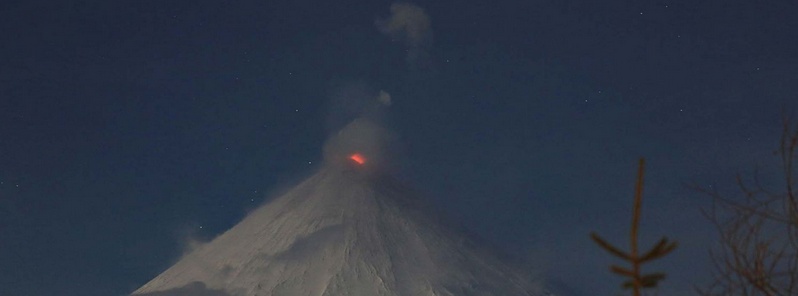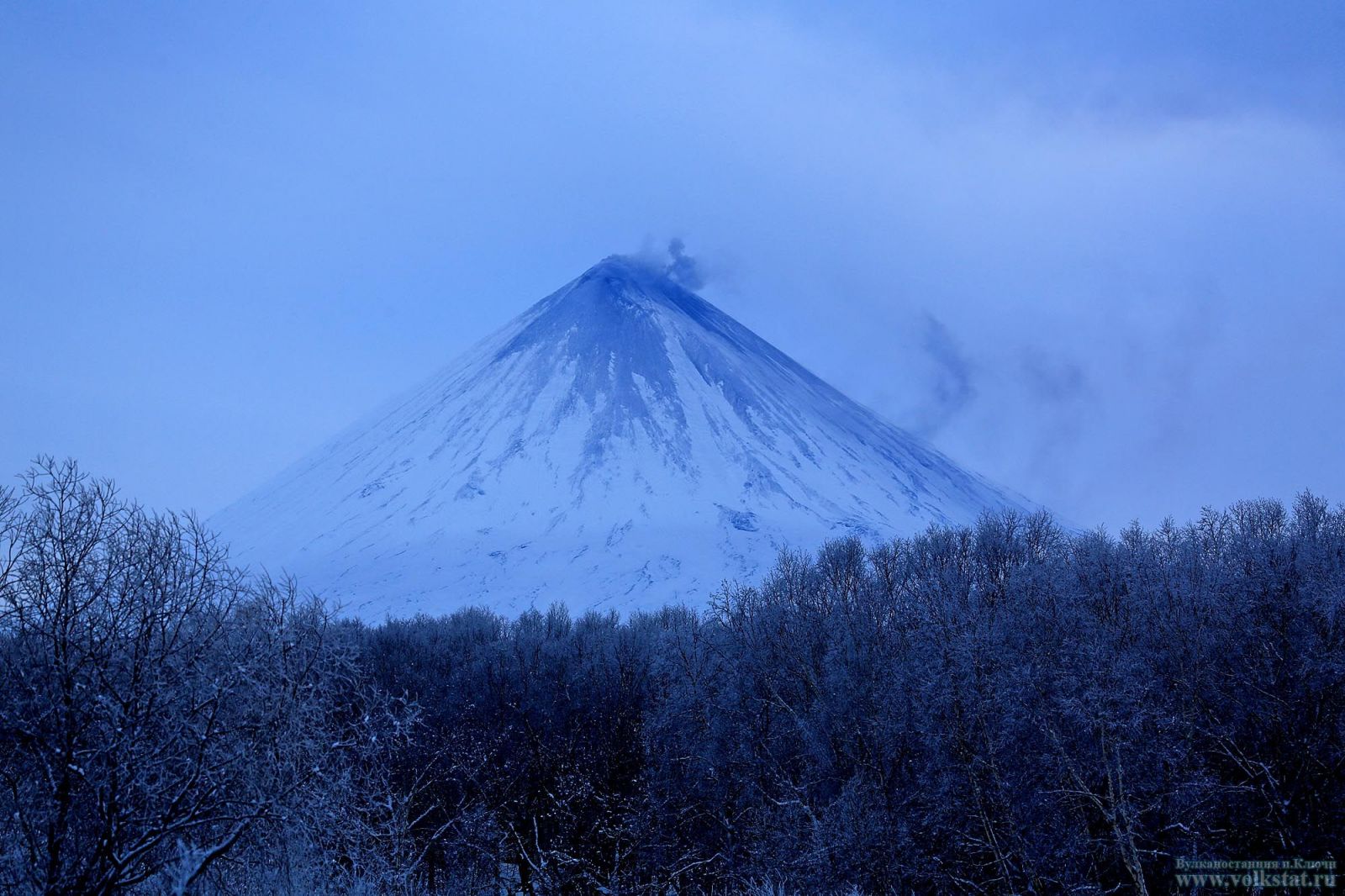Kliuchevskoi aviation color code raised to Orange, Russia

Explosive eruption of Russian Kliuchevskoi volcano began on January 1, 2015 and continues, KVERT reported today and raised Aviation Color Code to Orange.
Explosions send ash up to 5 – 6 km a.s.l., sometimes up to 7 km a.s.l. According to video and satellite data, a lava flow probably began to move on the southern flank of the volcano.
According to satellite data acquired at 03:11 UTC today (NOAA 19) volcanic cloud is reaching 5 000 m (16 400 ft) a.s.l.
The same satellite data shows an ash plume about 12.5 km of a width and about 36.8 km of a length (250 degrees of azimuth).

Kliuchevskoi on January 8, 2015. Image courtesy of Volkstat.ru
Based on seismic data from KB GS RAS, KVERT reported that seismic activity at Kliuchevskoi began to increase during December 19 – 20 and then increased again on December 31. Although cloud cover prevented views of the volcano during December 31 – January 1, a thermal anomaly was detected in satellite images on January 1, possibly indicating that a Strombolian eruption had begun. The Aviation Color Code was raised to Yellow on January 2.
Geologic summary
Klyuchevskoy (also spelled Kliuchevskoi) is Kamchatka's highest and most active volcano. Since its origin about 6000 years ago, the beautifully symmetrical, 4835-m-high basaltic stratovolcano has produced frequent moderate-volume explosive and effusive eruptions without major periods of inactivity. It rises above a saddle NE of sharp-peaked Kamen volcano and lies SE of the broad Ushkovsky massif. More than 100 flank eruptions have occurred during the past roughly 3000 years, with most lateral craters and cones occurring along radial fissures between the unconfined NE-to-SE flanks of the conical volcano between 500 m and 3600 m elevation.
The morphology of the 700-m-wide summit crater has been frequently modified by historical eruptions, which have been recorded since the late-17th century. Historical eruptions have originated primarily from the summit crater, but have also included numerous major explosive and effusive eruptions from flank craters. (GVP)
Data source: VONA/KVERT Information Release, January 11, 2015. KVERT, Institute of Volcanology and Seismology FEB RAS.
Featured image: Kliuchevskoi on January 4, 2015. Image credit: Volkstat.ru

Commenting rules and guidelines
We value the thoughts and opinions of our readers and welcome healthy discussions on our website. In order to maintain a respectful and positive community, we ask that all commenters follow these rules.